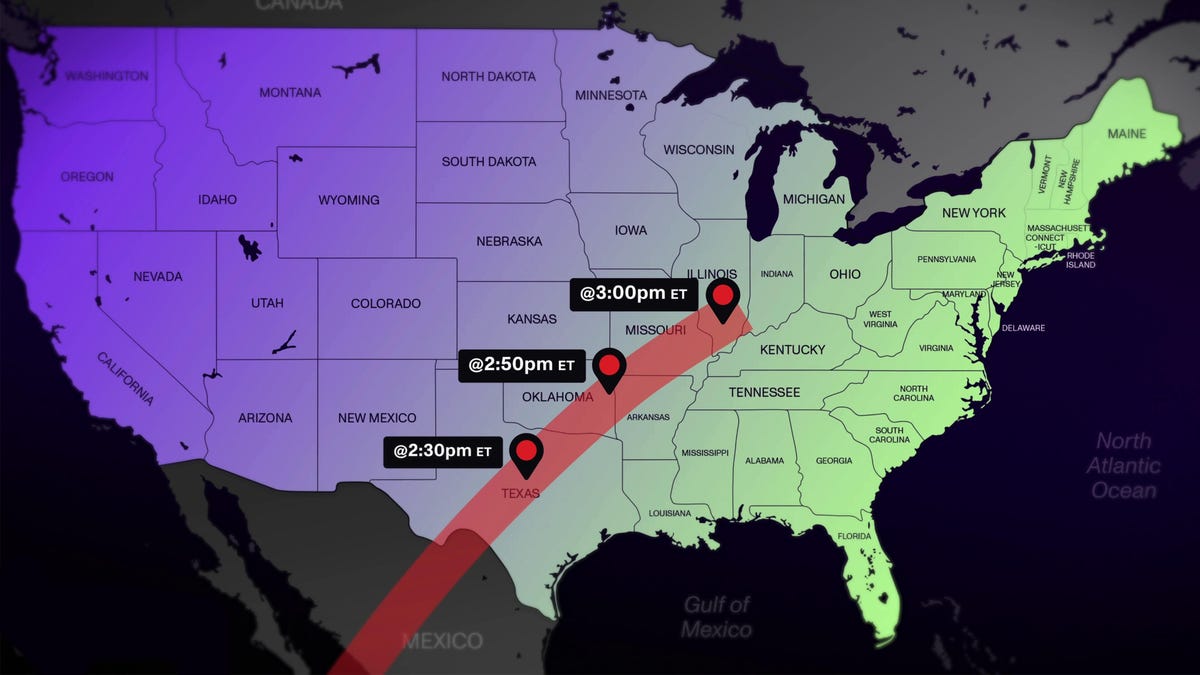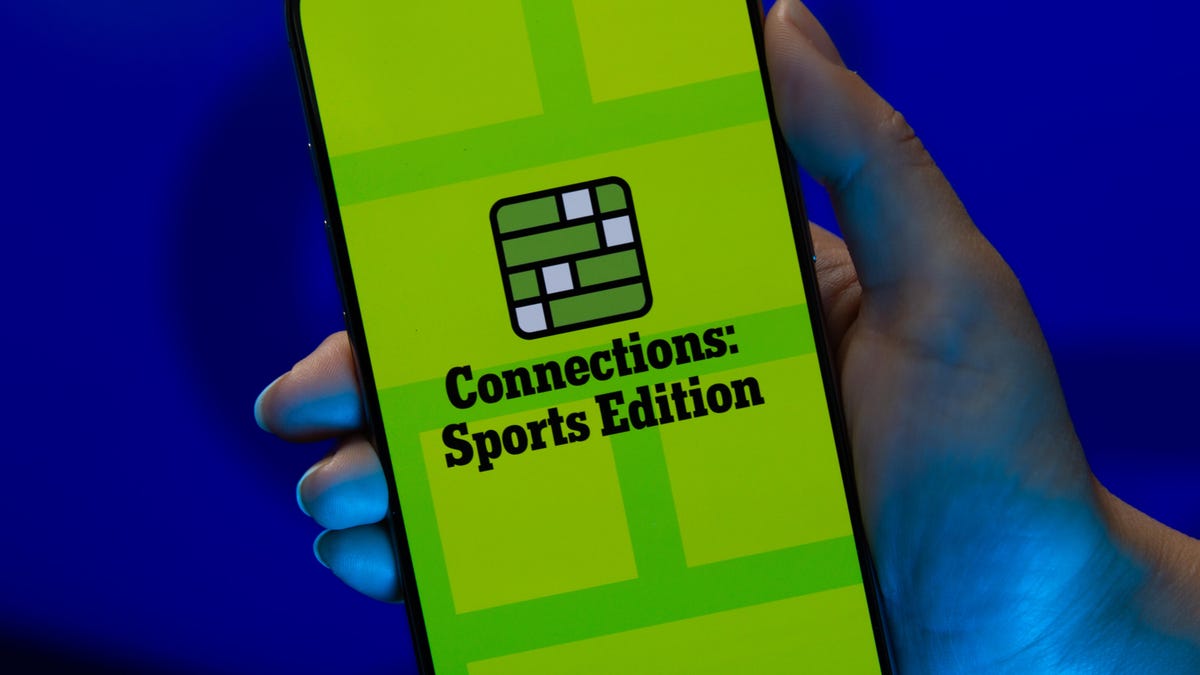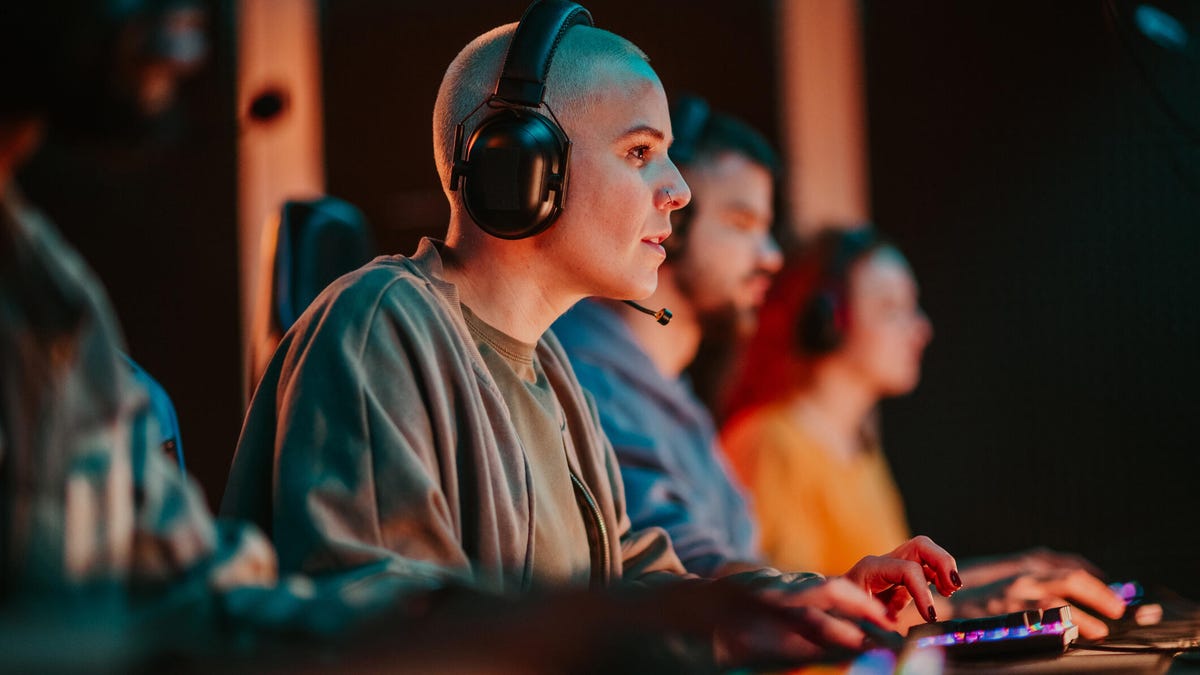Technologies
NASA Leans Into Solar Eclipse With 3 Rocket Launches: Here’s What’s Up With That
The space agency isn’t letting today’s solar eclipse go to waste.

We’re just hours away from North America’s last total solar eclipse until 2044, and as we prepare to look to the sky, NASA is preparing to launch three rockets.
Before, during and after the eclipse on Monday, NASA will fire three sounding rockets to determine how the total eclipse could affect radio communications on Earth. The findings could pave the way for NASA to develop new technologies to protect radio communications during both brief and extended periods when solar behavior disrupts particles on Earth.
Stargazers from Mexico to the US and Canada are standing by for the last total solar eclipse to pass over the contiguous US for the next 20 years. The duration of totality, or the time during which the moon completely shrouds the sun from view, will last 4 minutes and 27 seconds. The eclipse will reach Texas at approximately 1:10 p.m. ET and Maine by 2:22 p.m. ET. By 4:17 p.m. ET, it will move beyond the eastern North American border.
Firing rockets during an eclipse may sound like it comes straight from a sci-fi movie, but it’s a technique that’s been used for years to measure scientific data and theories. Indeed, eclipses provide critical, if short-lived, opportunities for scientists to gather information on a variety of topic areas to test whether their concepts are accurate.
Arguably the most important finding during an eclipse occurred in May 1919, when scientists discovered during a total eclipse that some stars appeared to be in the wrong place, according to NASA. The finding provided critical evidence to support Albert Einstein’s theory of relativity and the idea that the sun or other large celestial objects have so much gravity that they can bend light and distort spacetime.
NASA’s rocket launches on Monday won’t necessarily have that same gravitas, but science works in increments. The launches will be streamed live, so you can see what happens. Here’s how.
Why is NASA firing rockets during the eclipse?
The space agency is firing three sounding rockets, or rockets carrying scientific instruments, into the ionosphere, the region of the Earth’s atmosphere between the lower atmosphere, where we live, and space.
The ionosphere is scientifically important because it’s made up of particles that become ionized, or electrically charged, when they interact with the sun’s radiation. According to NASA, the ionosphere thins at night and thickens when the sun’s rays are hitting it. The ionosphere can be unpredictable, since it’s highly sensitive to disruption.
«Earth’s terrestrial weather and space weather can impact these particles, making it a dynamic region and difficult to know what the ionosphere will be like at a given time,» NASA says.
Another thing: the ionosphere affects communication, and especially high-frequency communication like radio waves. That could, for instance, create disturbances in communications with pilots in the air or with government agencies doing research. But radio waves traveling to and from satellites aren’t just of concern to aviators and scientists. They’re also vital elements of daily life, from satellite internet services like SpaceX’s Starlink to the GPS signals that underlie all manner of financial transactions and that help you get where you’re going.
From a site in Virginia, NASA’s three rockets will be launched into the ionosphere 45 minutes apart: before the eclipse starts; when the eclipse is ongoing; and after the eclipse has reached its peak. The rockets will reach a maximum altitude of 260 miles, allowing them to spend plenty of time in the ionosphere, which spans 55 miles to 310 miles above the Earth’s surface.
Each of the rockets is carrying four two-liter soda bottle-sized instruments that will be ejected during flight to evaluate any ionosphere disturbances, or perturbations, during the eclipse.
«Gathering the data on these perturbations will help scientists validate and improve current models that help predict potential disturbances to our communications, especially high frequency communication,» NASA says.
Has NASA fired rockets at an eclipse before?
This isn’t the first time NASA has fired rockets during an eclipse. In October, NASA fired the same three rockets from its White Sands Test Facility in North Mexico during an annular solar eclipse. The agency said that it was able to recover the rockets and refurbish them, allowing them to be used in Monday’s mission.
Thanks to that mission, scientists were able to see ionosphere disturbances after it fired the second and third rockets, during and after the eclipse, respectively. NASA didn’t see any ionosphere disturbance during the first launch.
However, this time around, the rockets are equipped with additional instruments, allowing them to capture more information than they did last year, NASA says.
When is NASA firing its rockets?
NASA plans to launch all three rockets from its Wallops Island facility in Virginia. The first rocket will launch at approximately 2:40 p.m. ET, with the second rocket launching at approximately 3:25 p.m. ET. NASA plans to launch the final rocket by 4:05 p.m. ET.
As always, timing on the launches depends on a variety of factors, including on-the-ground conditions, and may be subject to change. But since the eclipse isn’t waiting for NASA to be ready to fire rockets, expect the space agency to try to keep a tight schedule to ensure it doesn’t miss its window to capture data.
How can I watch NASA fire rockets at the eclipse?
If you’re interested in watching NASA’s rocket-firing mission, the agency will livestream it from its official Wallops Island YouTube page. It’ll also be featured during NASA’s official solar eclipse broadcast
The rocket-only livestream will begin at 2:30 p.m. ET. NASA will start airing its solar eclipse coverage at 1 p.m. ET.
Technologies
If You Were ‘Tricked’ Into an Amazon Prime Subscription, You Should Have Been Paid by Today
Amazon is paying $1.5 billion to people who mistakenly subscribed to Prime, and the first round of payments are due today.

Amazon Prime provides a lot of valuable benefits to its members, but the company’s registration practices for its premium subscription from 2019 to 2025 led to many customers accidentally subscribing to a service they didn’t want.
Amazon is now paying the price for that deception — the US Federal Trade Commission levied a massive $2.5 billion settlement on the company for its subscription tactics.
The majority of the settlement — $1.5 billion — has been earmarked to refund eligible subscribers, with the rest serving as a civil penalty. Amazon is also now legally required to provide a clear, obvious option to decline Prime, making it as easy to leave the service as it is to join.
Amazon isn’t admitting to shady behavior. «Amazon and our executives have always followed the law, and this settlement allows us to move forward and focus on innovating for customers,» Mark Blafkin, Amazon senior manager, said in a statement. «We work incredibly hard to make it clear and simple for customers to both sign up or cancel their Prime membership, and to offer substantial value for our many millions of loyal Prime members around the world.»
The online retail giant started sending out payments to eligible people in November and was supposed to conclude its initial automatic payments today, Dec. 24. Read on to learn more about Amazon’s settlement and what to do if you think you’re eligible for compensation but didn’t receive a payment.
Why did the FTC fine Amazon?
The FTC filed suit against Amazon, accusing the company of using «dark patterns» to nudge people into Prime subscriptions and then making it too hard to cancel. The FTC maintained Amazon was in violation of Section 5 of the FTC Act and the Restore Online Shoppers’ Confidence Act.
«Specifically, Amazon used manipulative, coercive or deceptive user-interface designs known as ‘dark patterns’ to trick consumers into enrolling in automatically renewing Prime subscriptions,» the FTC complaint stated.
Who’s eligible for Amazon’s payout?
Amazon’s legal settlement is limited to customers who enrolled in Amazon Prime between June 23, 2019, and June 23, 2025. It’s also restricted to customers who subscribed to Prime using a «challenged enrollment flow» or who enrolled in Prime through any method but were unsuccessful in canceling their memberships.
The FTC called out specific enrollment pages, including Prime Video enrollment, the Universal Prime Decision page, the Shipping Option Select page and the Single Page Checkout. To qualify for a payout, claimants must also not have used more than 10 Amazon Prime benefits in any 12-month period.
Customers who signed up via those challenged processes and did not use more than three Prime benefits within one year will be paid automatically by Amazon within 90 days. Other eligible Amazon customers will need to file a claim, and Amazon is required to send notices to those people within 30 days of making its automatic payments.
If you are eligible for the automatic payment, you should have received an email from Amazon by today explaining how to claim the money. You can be paid via PayPal or Venmo. If you prefer a paper check, don’t accept the digital payment. The FTC says Amazon will mail you a check that you must cash within 60 days.
How big will the Amazon payments be?
Payouts to eligible Amazon claimants will be limited to a maximum of $51. That amount could be reduced depending on the number of Amazon Prime benefits you used while subscribed to the service. Those benefits include free two-day shipping, watching shows or movies on Prime Video or Whole Foods grocery discounts.
Customers who qualify for the payments should have received them from Nov. 12 to Dec. 24, 2025.If you are eligible for compensation from Amazon but didn’t receive a payout, you’ll need to file a claim after Amazon starts the claim process. The FTC says it will update its Amazon settlement site once that process has begun.
Customers who did not use a challenged sign-up process but instead were unable to cancel their Prime memberships will also need to file claims for payment.
Technologies
Today’s NYT Connections: Sports Edition Hints and Answers for Dec. 25, #458
Here are hints and the answers for the NYT Connections: Sports Edition puzzle for Dec. 25, No. 458.

Looking for the most recent regular Connections answers? Click here for today’s Connections hints, as well as our daily answers and hints for The New York Times Mini Crossword, Wordle and Strands puzzles.
Today’s Connections: Sports Edition has a real mix of categories, including one that’s all about a certain famous athlete. If you’re struggling with today’s puzzle but still want to solve it, read on for hints and the answers.
Connections: Sports Edition is published by The Athletic, the subscription-based sports journalism site owned by The Times. It doesn’t appear in the NYT Games app, but it does in The Athletic’s app. Or you can play it for free online.
Read more: NYT Connections: Sports Edition Puzzle Comes Out of Beta
Hints for today’s Connections: Sports Edition groups
Here are four hints for the groupings in today’s Connections: Sports Edition puzzle, ranked from the easiest yellow group to the tough (and sometimes bizarre) purple group.
Yellow group hint: Swing away!
Green group hint: What’s that on your bat?
Blue group hint: Catch the football.
Purple group hint: Lake Placid or Lillehammer.
Answers for today’s Connections: Sports Edition groups
Yellow group: Baseball bat materials.
Green group: Associated with George Brett.
Blue group: NFL rookie WRs.
Purple group: Olympic ____.
Read more: Wordle Cheat Sheet: Here Are the Most Popular Letters Used in English Words
What are today’s Connections: Sports Edition answers?
The yellow words in today’s Connections
The theme is baseball bat materials. The four answers are aluminum, ash, birch and maple.
The green words in today’s Connections
The theme is associated with George Brett. The four answers are 5, pine tar, Royals and third base.
The blue words in today’s Connections
The theme is NFL rookie WRs. The four answers are Burden, Egbuka, Golden and McMillan.
The purple words in today’s Connections
The theme is Olympic ____. The four answers are Games, rings, torch and village.
Don’t miss any of our unbiased tech content and lab-based reviews. Add CNET as a preferred Google source.
Technologies
Christmas Eve Gaming Crushed as Steam Goes Offline
Services related to the popular game hub seem to slowly be returning as of Wednesday afternoon.

Your Christmas Eve gaming session might not go as planned. Online gaming hub Steam went down on Wednesday. As of about 1:30 pm PT, the Steam store page was once again accessible, so services seemed to be coming back online.
The Steam outage appeared to begin mid-afternoon ET, according to Downdetector, which monitors site outages. (Disclosure: Downdetector is owned by the same parent company as CNET, Ziff Davis.)
A representative for Steam did not immediately respond to a request for comment.
As of Wednesday noon PT, Steam’s official X and Bluesky accounts hadn’t posted anything about the outage.
Gamers certainly noticed. «Steam down, Steam down!!!» wrote one Bluesky user.
Others commented on the bad timing just as gamers were enjoying time off or receiving gaming gifts. «‘You got a gift on Steam!’ oh cool ‘Steam is down’ oh cool,» wrote another Bluesky user.
-

 Technologies3 года ago
Technologies3 года agoTech Companies Need to Be Held Accountable for Security, Experts Say
-

 Technologies3 года ago
Technologies3 года agoBest Handheld Game Console in 2023
-

 Technologies3 года ago
Technologies3 года agoTighten Up Your VR Game With the Best Head Straps for Quest 2
-

 Technologies4 года ago
Technologies4 года agoBlack Friday 2021: The best deals on TVs, headphones, kitchenware, and more
-

 Technologies4 года ago
Technologies4 года agoVerum, Wickr and Threema: next generation secured messengers
-

 Technologies4 года ago
Technologies4 года agoGoogle to require vaccinations as Silicon Valley rethinks return-to-office policies
-

 Technologies4 года ago
Technologies4 года agoOlivia Harlan Dekker for Verum Messenger
-

 Technologies4 года ago
Technologies4 года agoiPhone 13 event: How to watch Apple’s big announcement tomorrow
